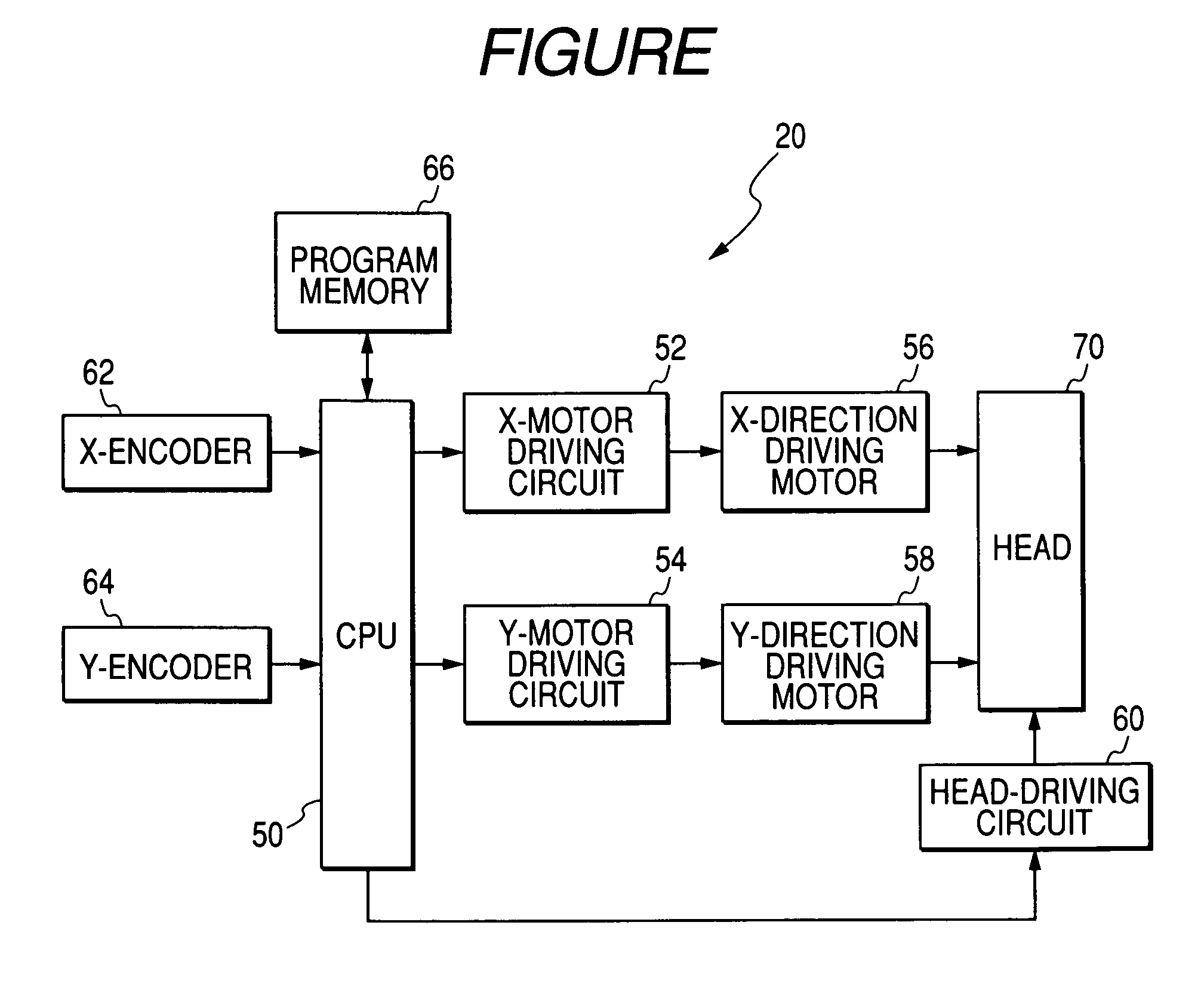Novel polymer compound, composition containing the compound, ink composition, ink-applying method, and ink-applying apparatus
a polymer compound and composition technology, applied in the field of new polymer compound, can solve the problems of many problems that need to be solved, and many problems remain to be solved, and achieve the effects of improving the composition of the colorant, excellent image forming method, and excellent image forming apparatus
- Summary
- Abstract
- Description
- Claims
- Application Information
AI Technical Summary
Benefits of technology
Problems solved by technology
Method used
Image
Examples
example 1
[0135] Synthesis of Tri-Block Copolymer Constituted of A-Segment: Methoxyethyl Alkenyl Ether (MOVE), B-Segment: Random Copolymer of Isobutyl Alkenyl Ether and CH2═CHOCH2CH2OPhPh (IBVE-r-BPhOVE), C-Segment: 4-(2-Vinyloxy)ethoxybenzoic Acid (HBVE) (Poly[MOVE-b-(IBVE-r-BPhOVE)-b-HBVE] (II-f) (“b” denotes a block copolymer, “r” denotes a random copolymer)
[0136] A glass container having a three-way stopcock was purged with nitrogen, and was heated in a nitrogen atmosphere to 250° C. to eliminate adsorbed water. The system was brought to room temperature. Thereto, were added 20 mmol of MOVE, 16 mmol of ethyl acetate, 0.1 mmol of 1-isobutoxyethyl acetate, and 11 mL of toluene. The reaction system was cooled to 0° C. Thereto 0.2 mmol of ethylaluminum sesquichloride (an equimolar mixture of diethylaluminum chloride and ethylaluminum dichloride) was added to initiate polymerization. The molecular weight of the growing polymer was monitored at prescribed intervals by molecular sieve column ch...
example 2
[0141] A portion of 13 mass parts of the above tri-block copolymer, and 5 mass parts of a fat-soluble dye, Oil Blue-N (trade name, Aldrich Co.) were dissolved in dimethylformamide. Thereto 400 mass parts of distilled water was added to obtain an ink composition of an aqueous phase. Thereto 0.1 mL of an aqueous 0.1N sodium hydroxide solution was added, and homogenized with a supersonic wave homogenizer for 10 minutes. The mixture was left standing for one hour. The pH of the dispersion mixture was found to be 12 by a pH test paper. This dispersion mixture was highly transparent and had a blue color. Even after 10 days of standing, the fat-soluble dye causes neither separation nor precipitation.
[0142] The enclosure of the colorant and the hydrophobic polymer segment was confirmed by EF-TEM observation by cryotransfer, elemental analysis by EELS, and stimulation-responsiveness of the ABC block copolymer in the colorant dispersion mixture as described before.
[0143] The above ink compo...
example 3
Synthesis of Tri-Block Copolymer Constituted of A-Segment: 2-Methoxyethyl Vinyl Ether (MOVE), B-Segment: Random Copolymer of Isobutyl Vinyl Ether and CH2═CHOCH2CH2OPhPh (IBVE-r-VEEtPhPh), C-Segment: Methyl 4-(2-Vinyloxy)ethoxybenzenesulfonate
[0149] A glass container having a three-way stopcock was purged with nitrogen, and was heated in a nitrogen atmosphere to 250° C. to eliminate adsorbed water. The system was brought to room temperature. Thereto, were added 20 mmol of MOVE, 16 mmol of ethyl acetate, 0.1 mmol of 1-isobutoxyethyl acetate, and 11 mL of toluene. The reaction system was cooled to 0° C. Thereto 0.2 mmol of ethylaluminum sesquichloride (an equimolar mixture of diethylaluminum chloride and ethylaluminum dichloride) was added to initiate polymerization. The molecular weight of the growing polymer was monitored at prescribed time intervals by molecular sieve column chromatography (GPC) and NMR to detect the completion of the polymerization of A-segment.
[0150] Thereto a ...
PUM
| Property | Measurement | Unit |
|---|---|---|
| wavelength | aaaaa | aaaaa |
| pH | aaaaa | aaaaa |
| pH | aaaaa | aaaaa |
Abstract
Description
Claims
Application Information
 Login to View More
Login to View More - R&D
- Intellectual Property
- Life Sciences
- Materials
- Tech Scout
- Unparalleled Data Quality
- Higher Quality Content
- 60% Fewer Hallucinations
Browse by: Latest US Patents, China's latest patents, Technical Efficacy Thesaurus, Application Domain, Technology Topic, Popular Technical Reports.
© 2025 PatSnap. All rights reserved.Legal|Privacy policy|Modern Slavery Act Transparency Statement|Sitemap|About US| Contact US: help@patsnap.com



